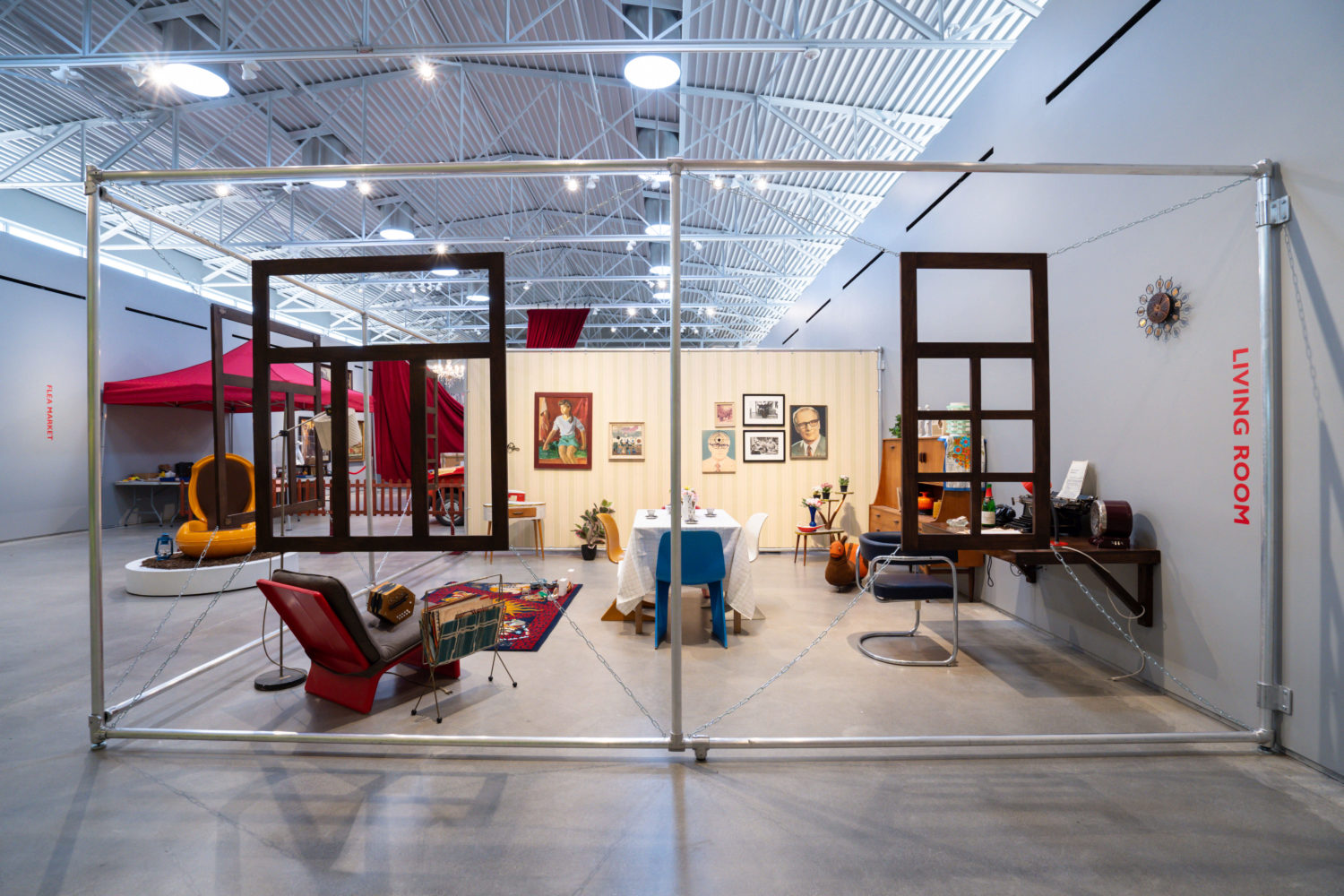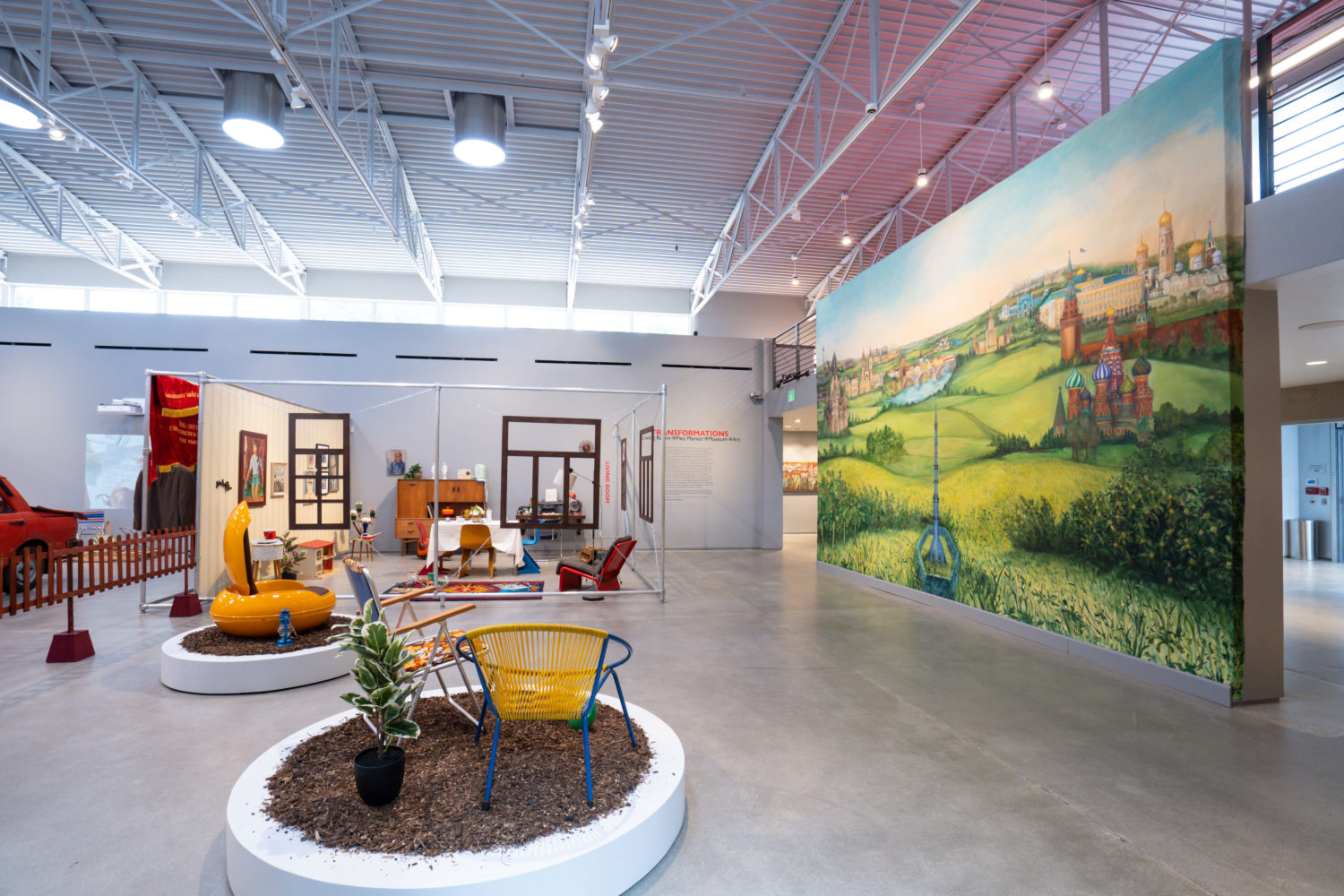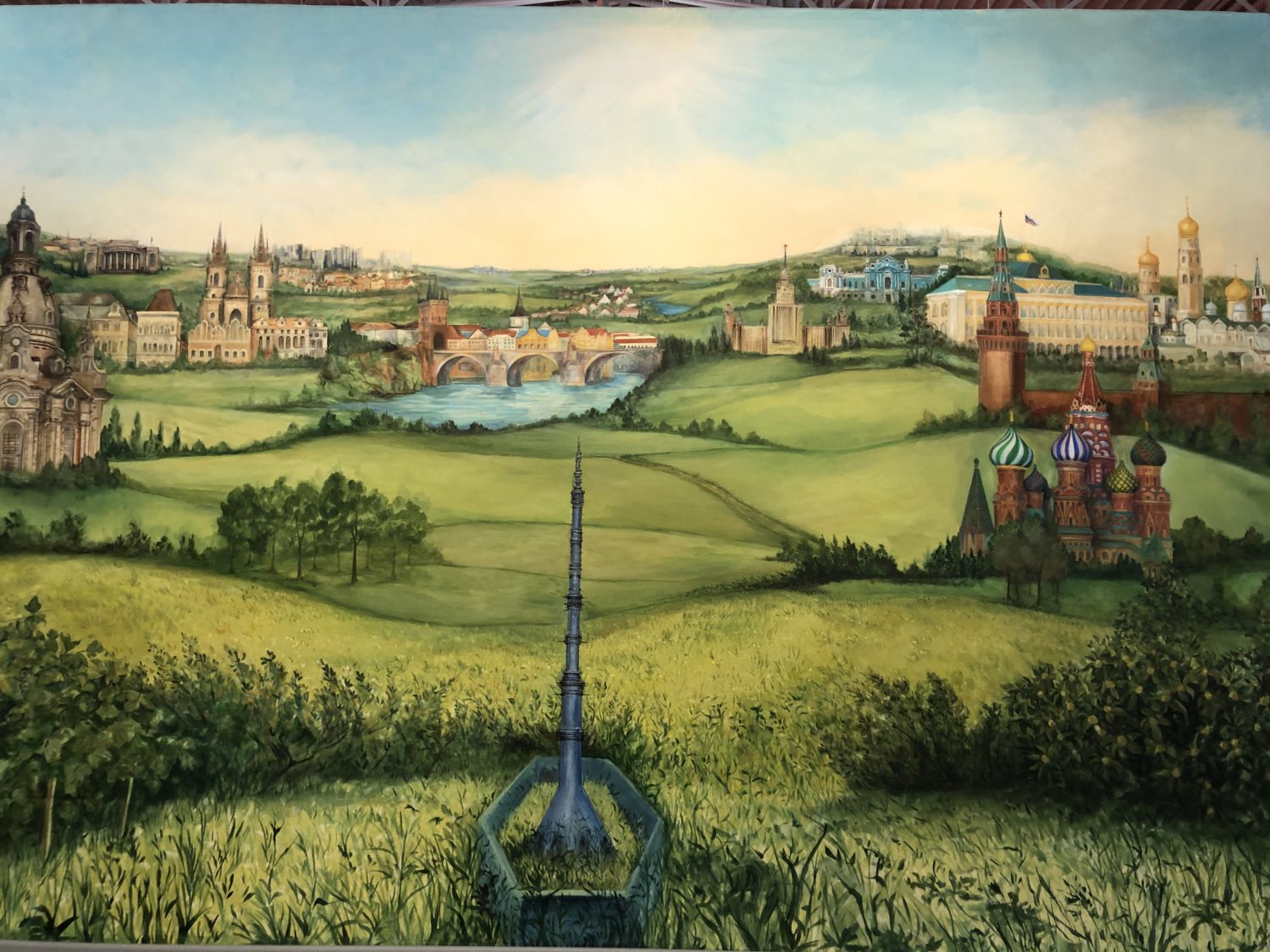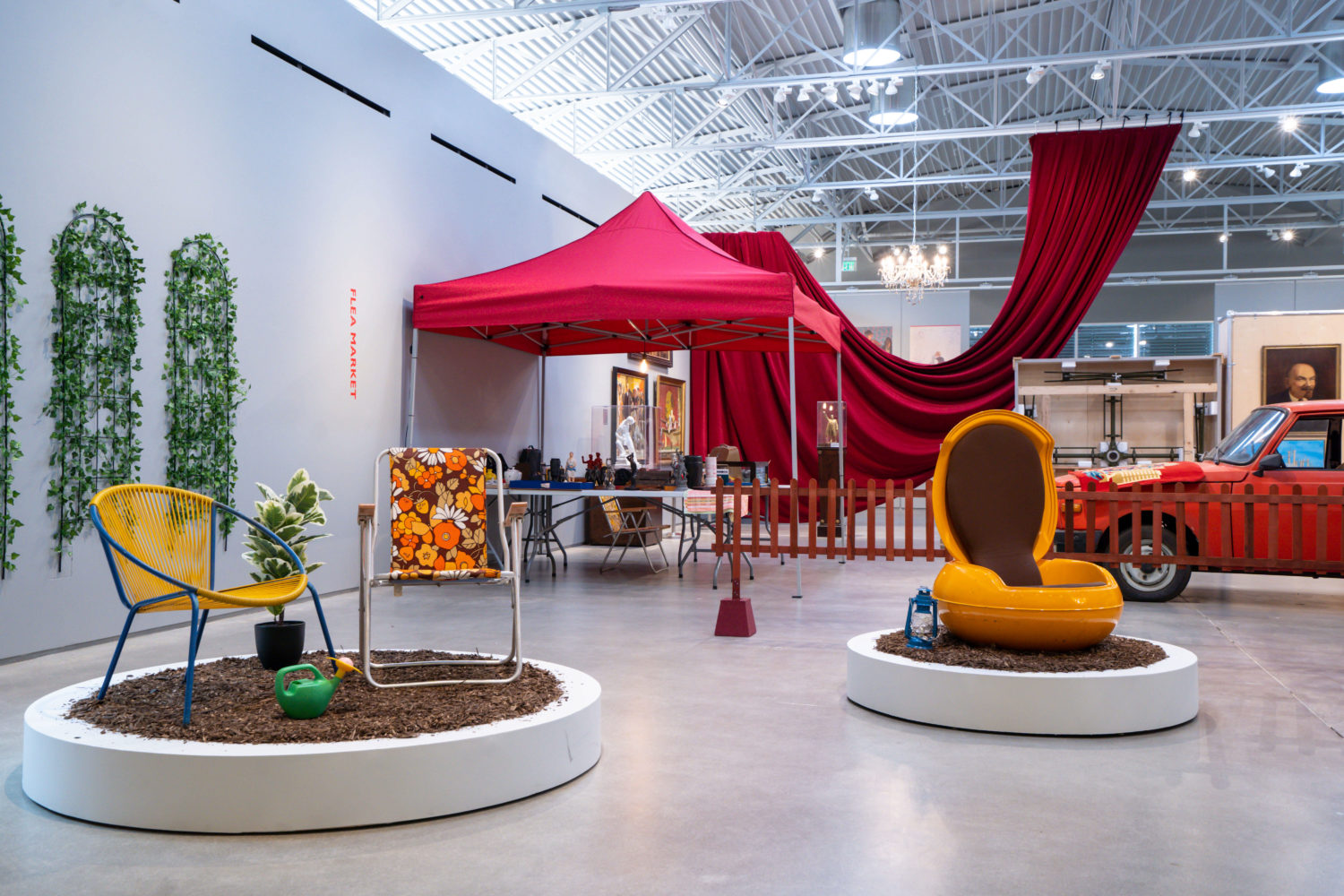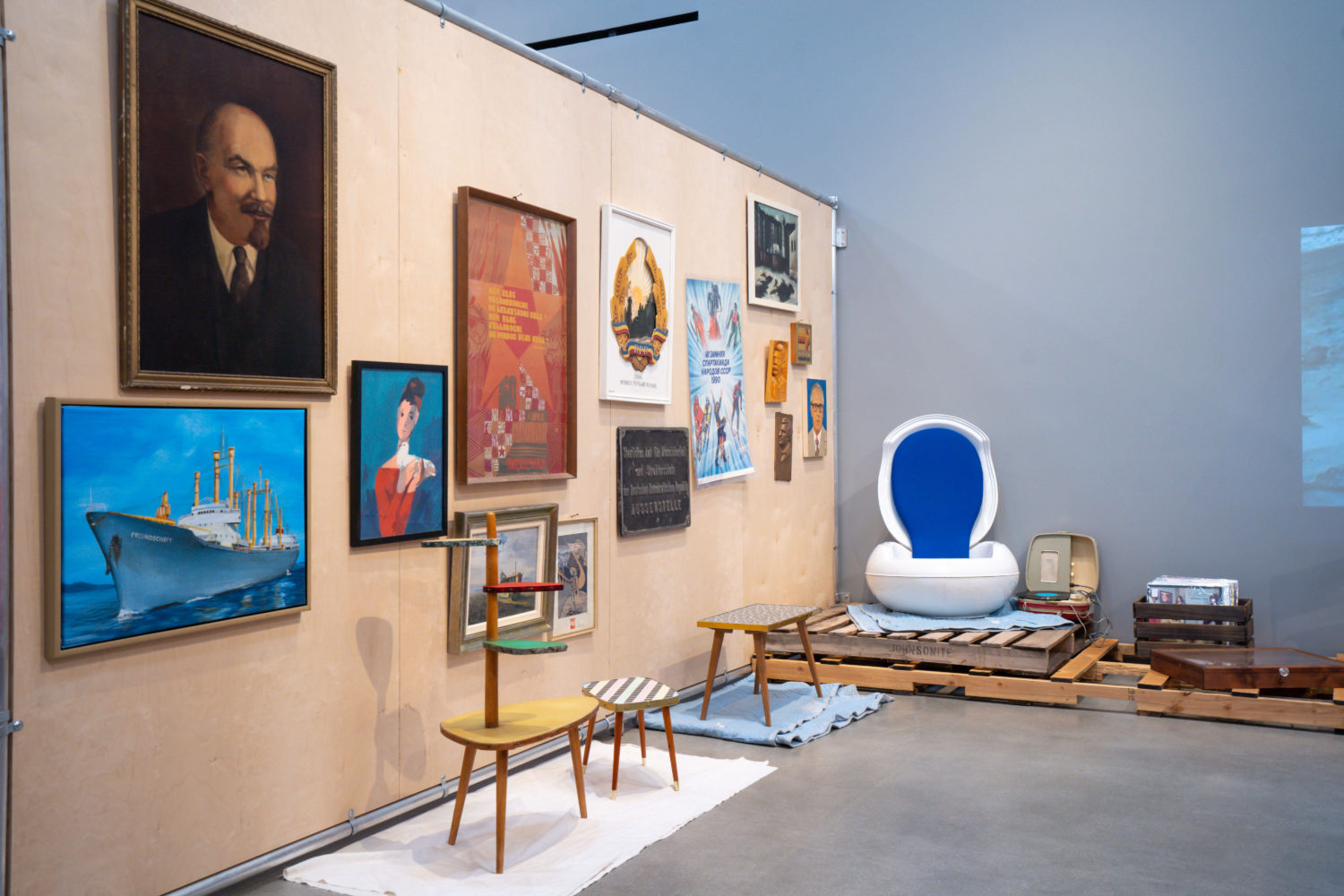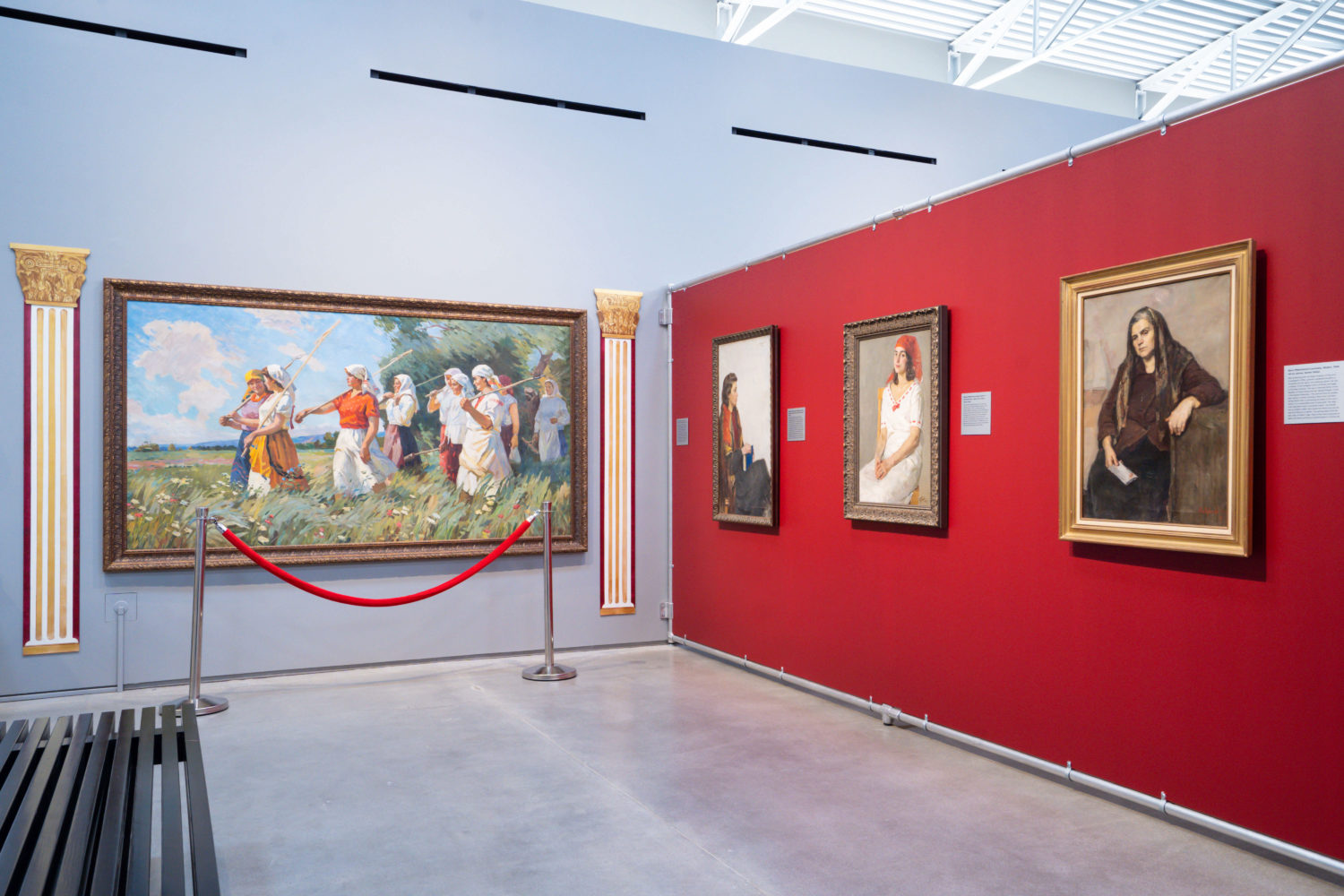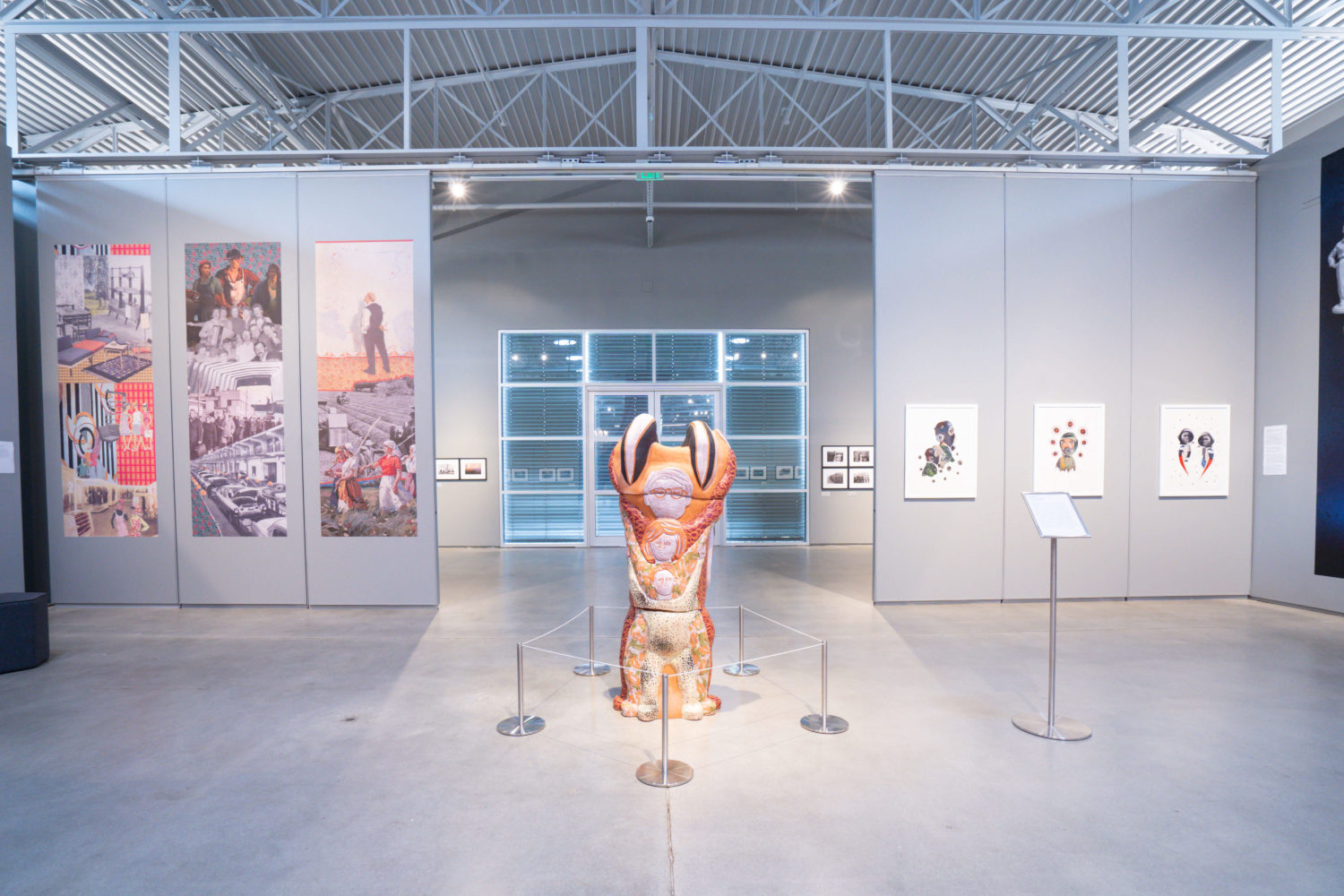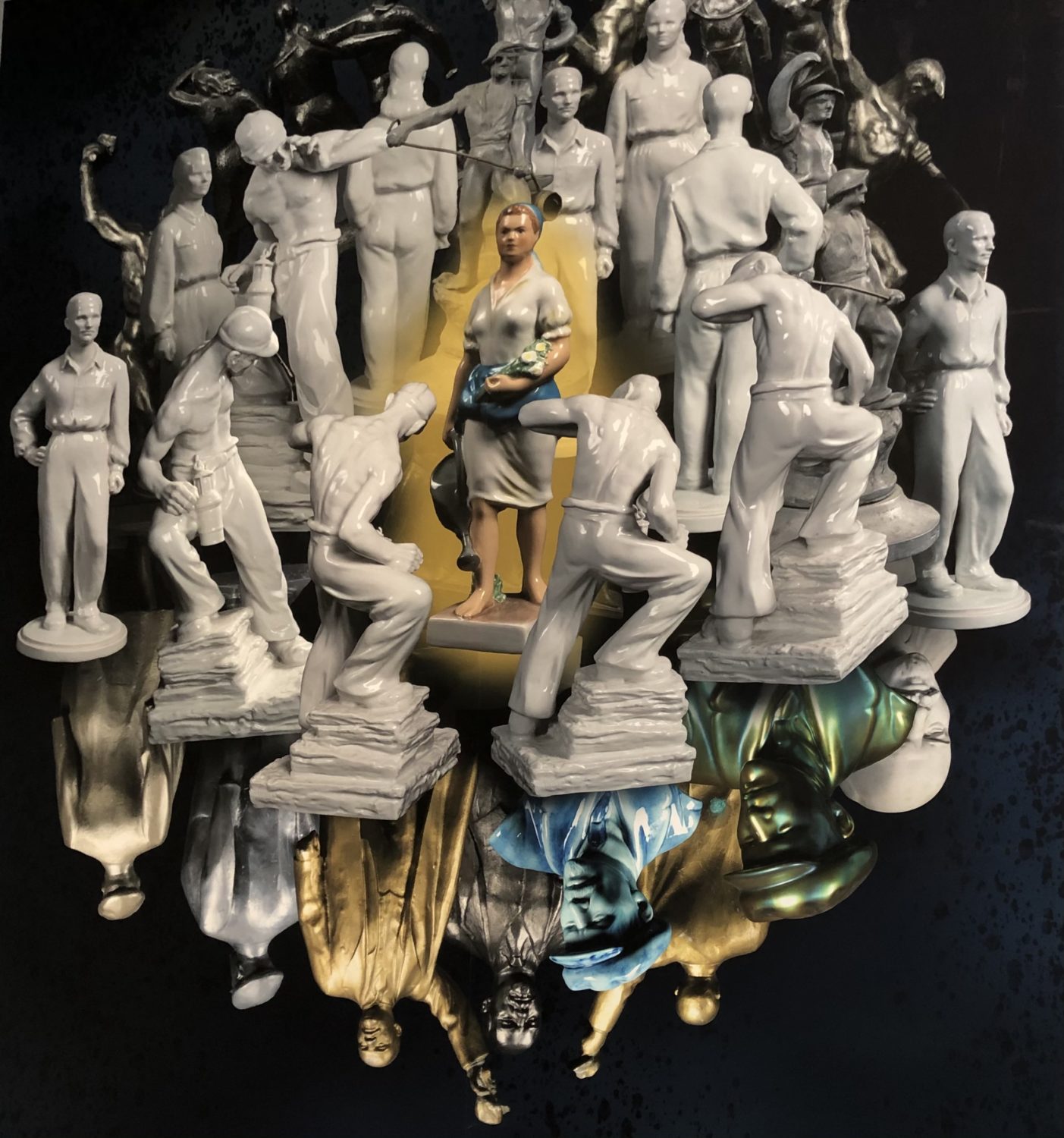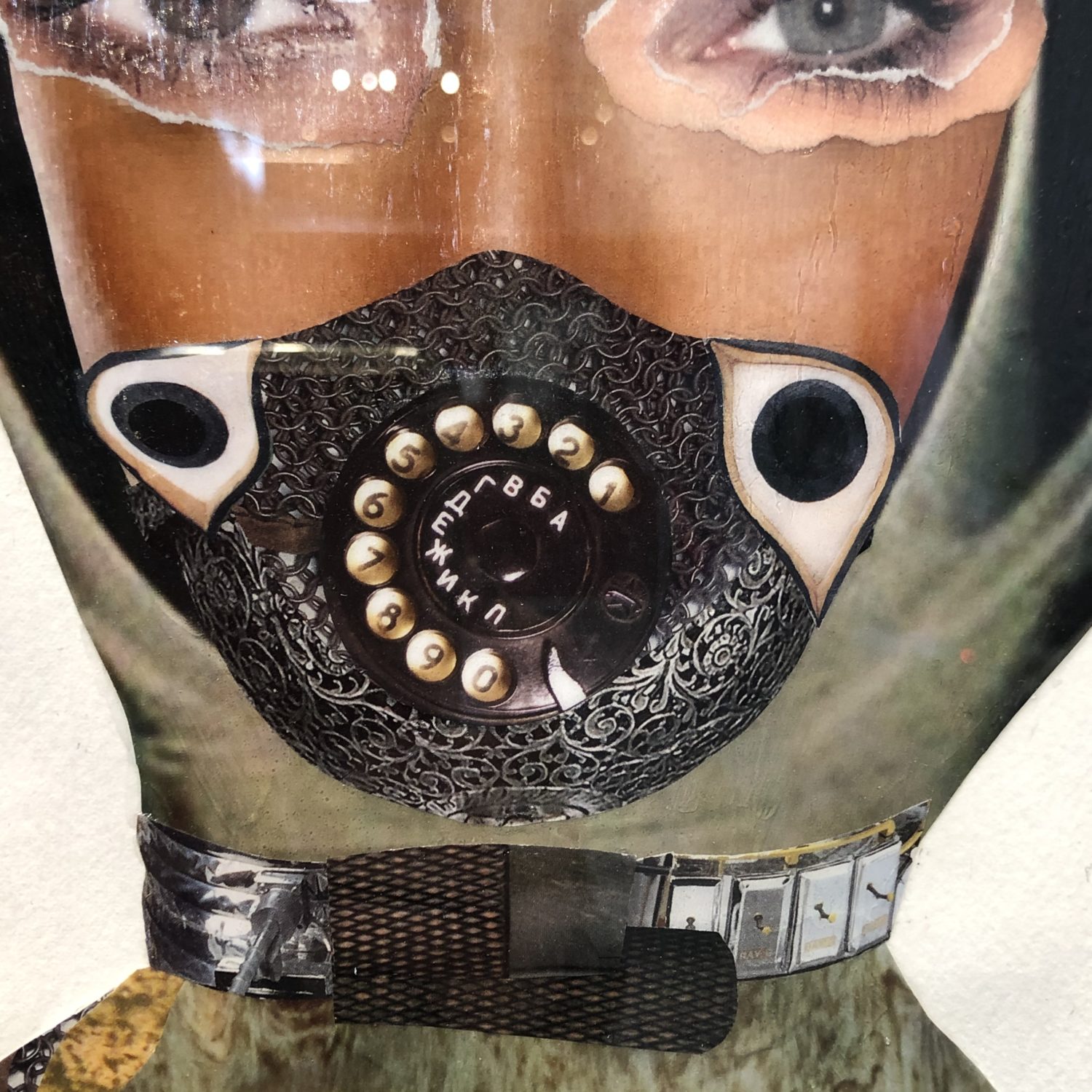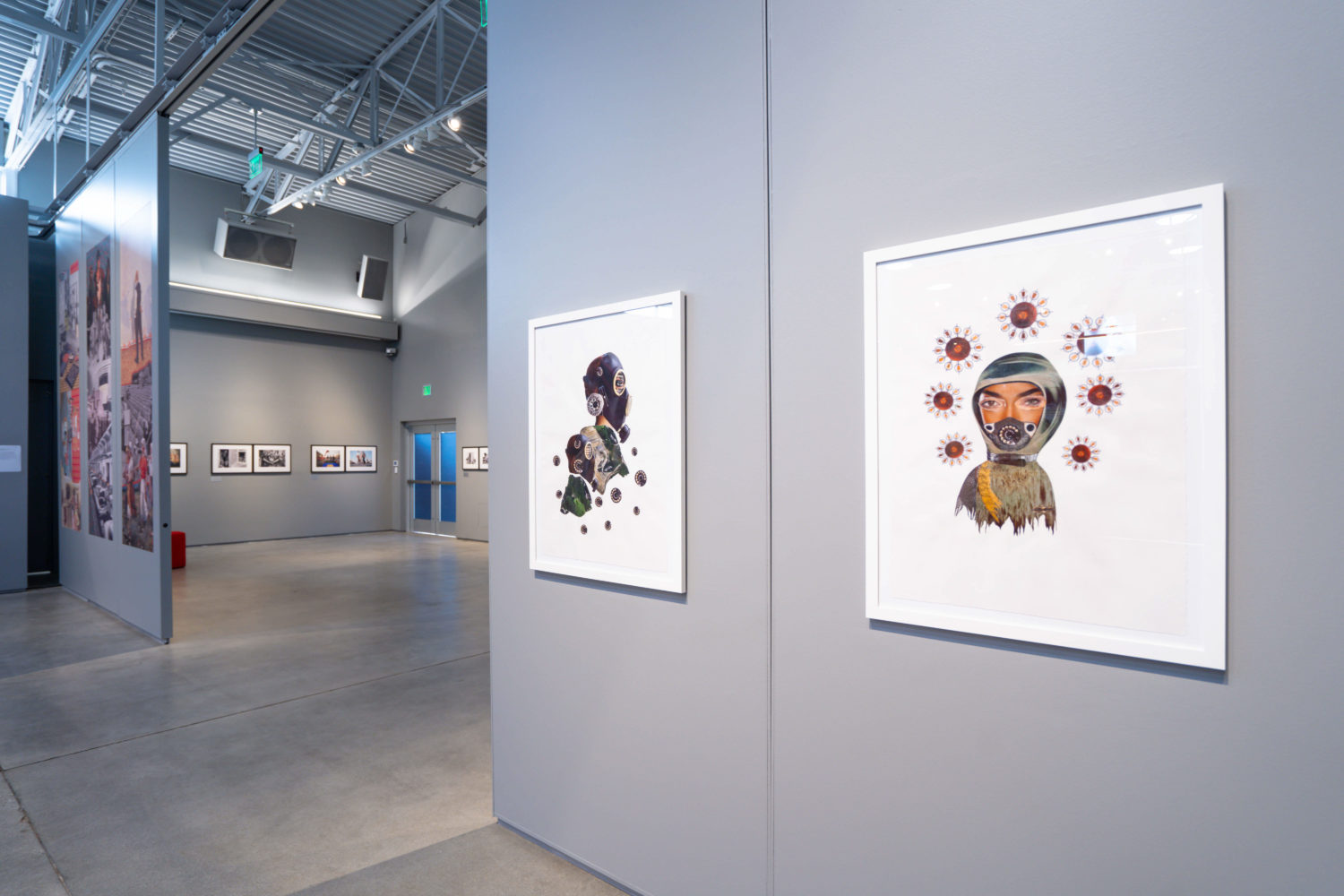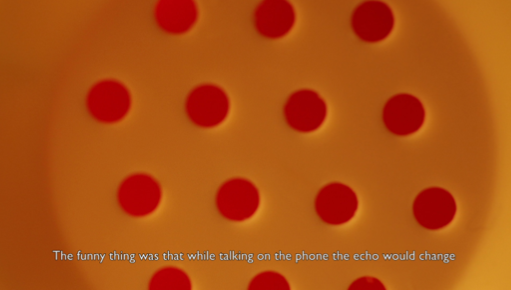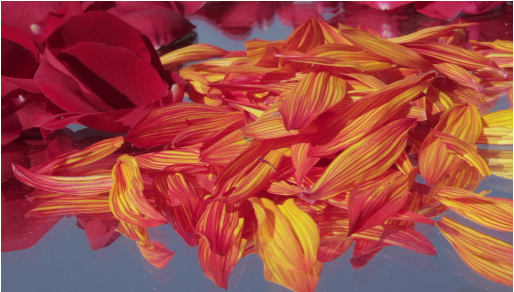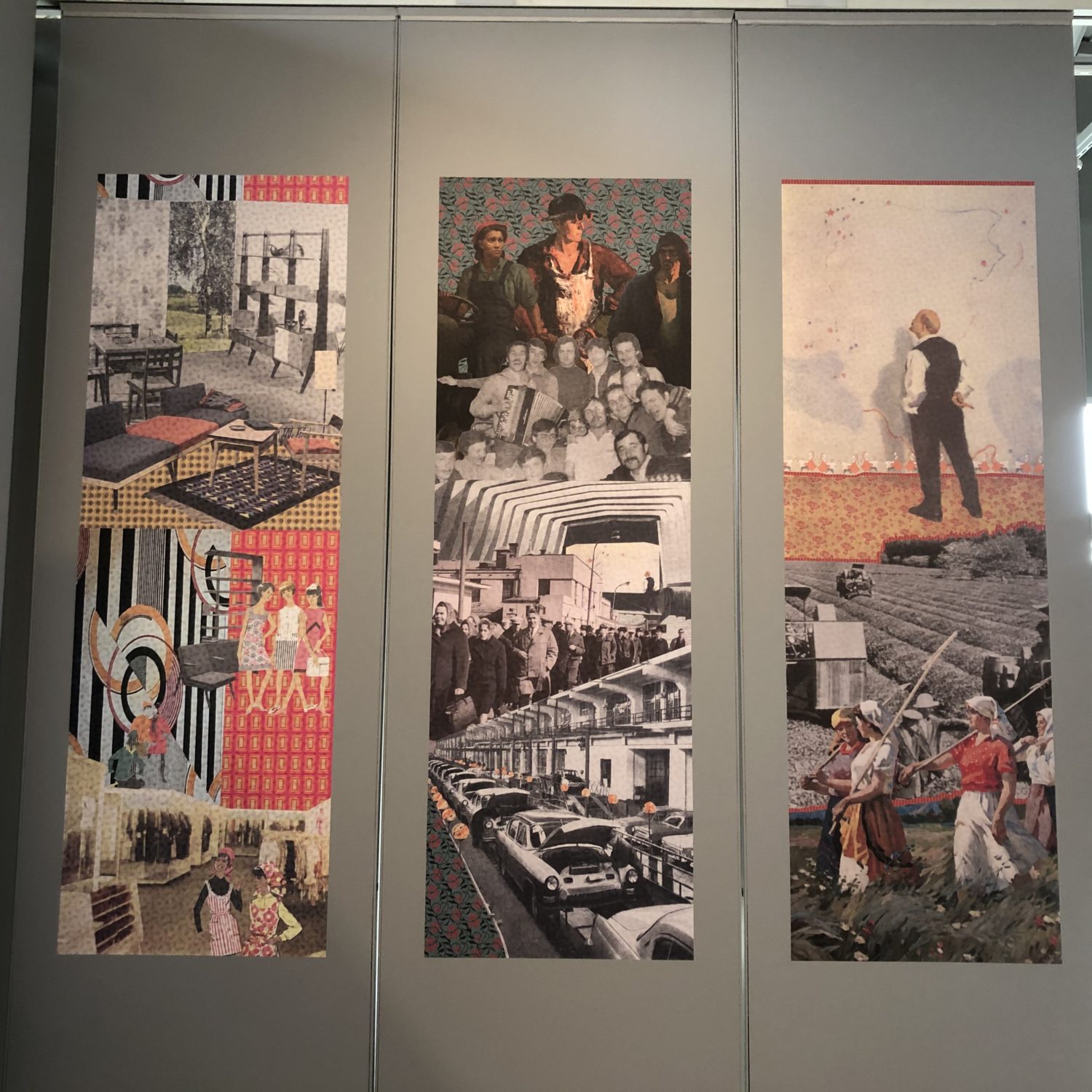TRANSFORMATIONS: Living Room → Flea Market → Museum → Art is an inventive and high-spirited exhibition that does what the Wende Museum does best. It mines the rich archive of Cold War art, design, media and ephemera in its remarkable collection and contextualizes its treasures within the setting of contemporary culture and politics. In this case, the four-part installation traces the life of domestic and public aesthetic objects — from their original functions in mid-century Soviet life, to the latter-day flea markets where they resurfaced as collectibles after the fall of the Soviet Union, to their institutional elevation to the status of significant cultural artifacts and as they ultimately become muses and subjects in the contemporary artist’s studio.
The exhibition sets a tone of gentle surrealism with a site-specific mural by Alisa Keegan which is both picturesque and sublime in its visualization, proceeding with a series of beautifully installed vignettes with the quality of theater sets or showroom scenarios, we see lively and colorful examples of mid-century furniture and decor. The quirky atomic-age angles, eccentric palettes, affection for Bakelite, spaceship contours on everything from beach chairs to plant stands, stylized fashions, bulky televisions, enormous and allegedly portable electronics, and familiar air of retro-futurism plays out in a presentation showing a lot in common with Palm Springs Modernism.
It begins in a convincing Living Room, before pivoting to a Flea Market diorama which perfectly encapsulates the jumbled-up joy of treasure hunting on folding tables jam-packed with unique, obscure objects of beauty and desire — further enriched by the fact that at that point in the story, they have become imbued with history, the aura of a recent past and a big change, and a complex nostalgia tinged with trauma, scholarship and critique.
A threshold between the Flea Market and the Museum sections shows a massive military-industrial object and a stately bust of Lenin still in their storage crates, as a way of introducing the idea of the active collecting institution’s involvement in cultural preservation and its follow-on agency in how what is preserved is evolving interpreted and presented. The Museum section itself is all sweeping red drapery and stanchions, pomp and circumstances signaling the establishment of a canon. In this section the Wende includes some of its most popular and valuable works of art, especially examples of the works of social realism and hagiographic party propaganda most often associated with the era.
The exhibition culminates in Art — the final section of the four, featuring all new work by contemporary artists directly engaging with not only the actual, physical stuff but also the ethos of the museum’s archives and this exhibition. Each project is flush with present-day resonance from gender and economic politics to science, surveillance, cultural rituals and environmentalism, and in some especially poignant cases their own personal family histories.
Chelle Barbour’s three-panel collage Rona and the Brave New World (2020) is a sourced-material fable of a post-Covid world in which nature has both menaced and been healed, and respirators are familiar sights. Ken Gonzales-Day’s large-scale digital print Monumental Vision: Labor/Lenin (2020) is a pigment print on vinyl itself at a monumental scale, which considers the fate of discarded sculptural testaments to Soviet rule in the implicit context of toppled Confederate monuments in the U.S. and indeed, the altars to violent colonialism that pollute so much of the world.
Farrah Karapetian’s video Extra Credit (2020) reimagines Springtime, the 1976 painting by Boris Aleksandrovich Spornikov of female workers using flower petals to construct a mural-size portrait of Lenin. It is a meditative and obsessive work exploring both unsettling depths of devotion to an oppressive ideology and the pressing of beauty and ceremony into the service of those same ideas. Richtje Reinsma & Daphne Rosenthal’s video The Third Ear: A Taped Memory (2015) aestheticizes and abstracts images of Soviet era listening devices with audio/text of monitored conversations and a journalist’s unsettling account of being surveilled by the state.
Bari Ziperstein’s Family is the Law (2020) is a more or less life-size terracotta and glaze 3-D portrait of her family unit, bursting with personality and inspired by both traditional Russian nesting dolls and the plentiful propaganda of the Soviet era promoting adherence to the old school family structure as a kind of moral patriotism. Jennifer Vanderpool’s wall-size multipanel work Comrades Nikifor and Ksenia (2020, digital collage on vinyl) deftly integrates and layers images both in homage to her own Ukrainian grandparents and a more fanciful vision of what their lifetimes would have been like. Culled from abstracted and repurposed images from within the Wende’s holdings, spliced with images and ephemera from her personal family collection, Vanderpool situates her individual story within both actual contemporaneous cultural expressions and a broader world of ideas about that history and its legacy for today.
TRANSFORMATIONS is on view at the Wende Museum in Culver City through October 24; wendemuseum.org.
Advertising disclosure: We may receive compensation for some of the links in our stories. Thank you for supporting LA Weekly and our advertisers.

